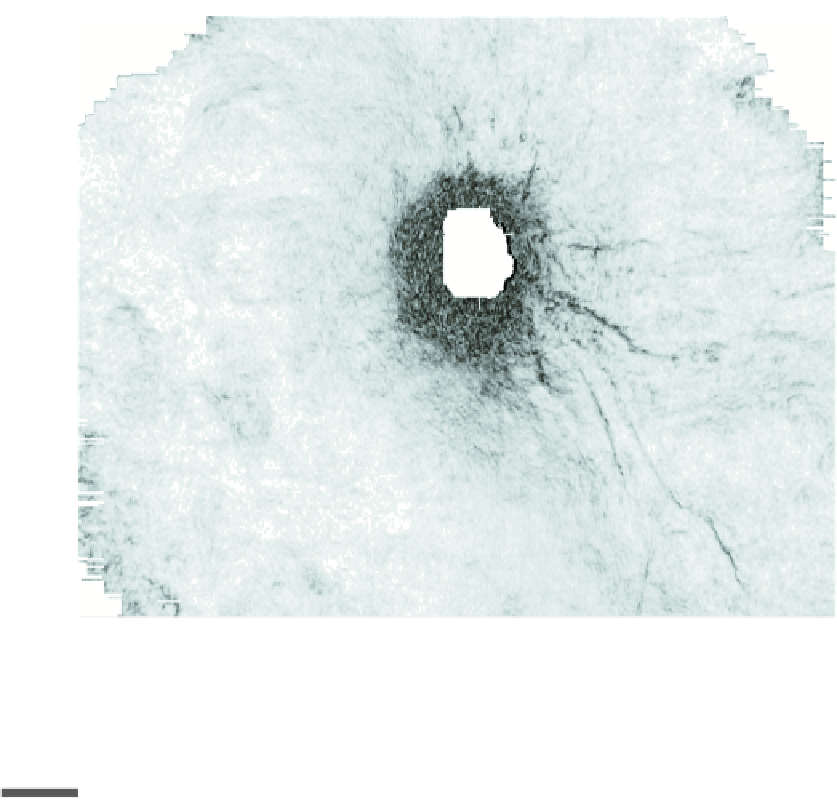Geoscience Reference
In-Depth Information
Fig. 3.22
Coherency map showing radial faults around a piercing salt diapir.
3.3
Depth conversion
There is little that is specific to 3-D surveys so far as depth conversion is concerned; all
the techniques in use are equally applicable to 2-D data. However, the density of data can
make it much easier to incorporate seismic velocity information. For completeness, this
section will cover briefly the general principles of vertical-stretch depth conversion, and
the use of well velocity information and seismic velocity data; finally, we shall describe
ways of dealing with complex overburden where lateral shifts are needed as well as
vertical stretch.
3.3.1
Principles of vertical-stretch methods
If the seismic migration process has done a good job, then seismic energy is located at
the right place in map view. If the migration was carried out using the wrong velocities,




